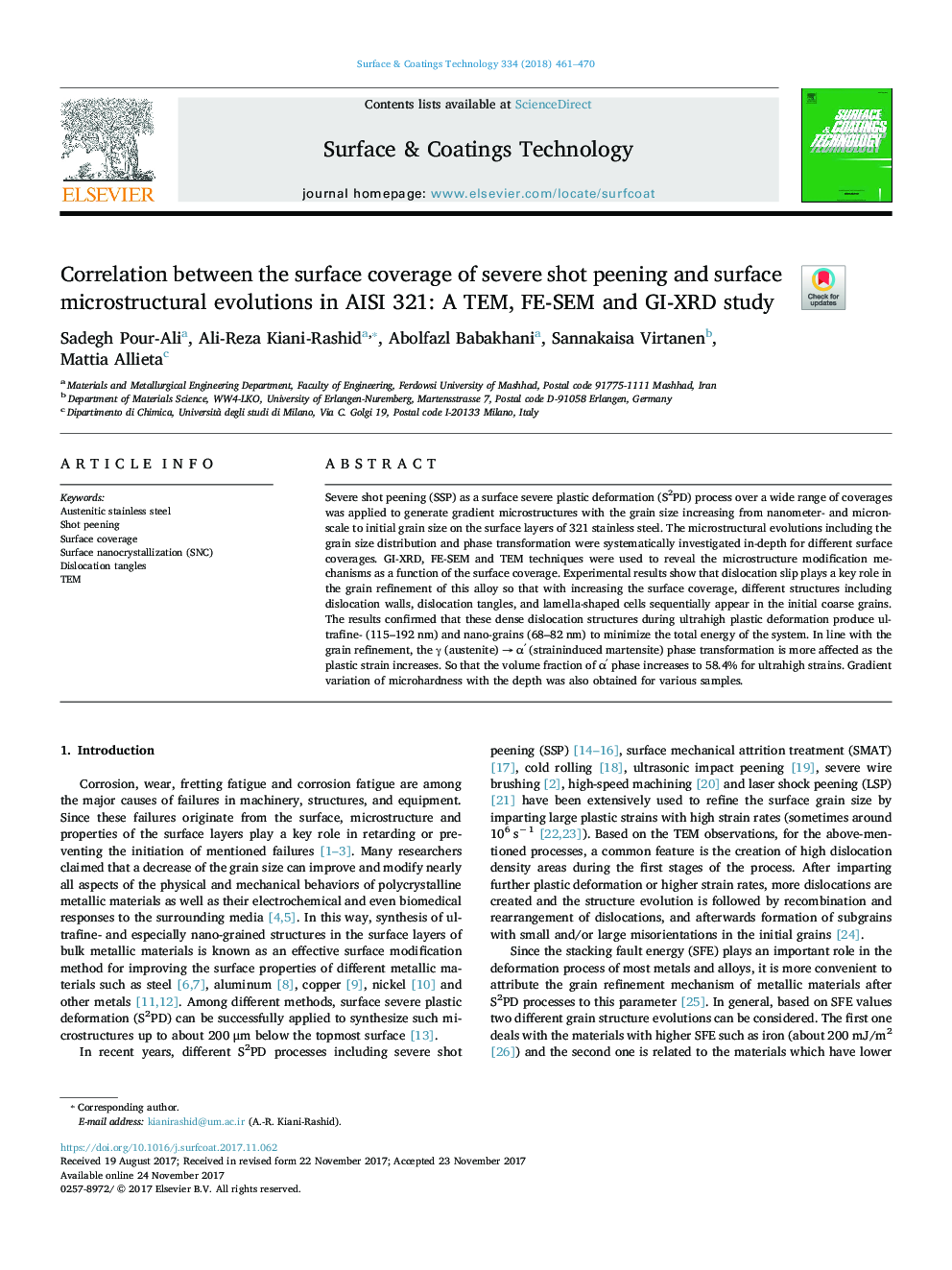| Article ID | Journal | Published Year | Pages | File Type |
|---|---|---|---|---|
| 8024669 | Surface and Coatings Technology | 2018 | 10 Pages |
Abstract
Severe shot peening (SSP) as a surface severe plastic deformation (S2PD) process over a wide range of coverages was applied to generate gradient microstructures with the grain size increasing from nanometer- and micron-scale to initial grain size on the surface layers of 321 stainless steel. The microstructural evolutions including the grain size distribution and phase transformation were systematically investigated in-depth for different surface coverages. GI-XRD, FE-SEM and TEM techniques were used to reveal the microstructure modification mechanisms as a function of the surface coverage. Experimental results show that dislocation slip plays a key role in the grain refinement of this alloy so that with increasing the surface coverage, different structures including dislocation walls, dislocation tangles, and lamella-shaped cells sequentially appear in the initial coarse grains. The results confirmed that these dense dislocation structures during ultrahigh plastic deformation produce ultrafine- (115-192 nm) and nano-grains (68-82 nm) to minimize the total energy of the system. In line with the grain refinement, the γ (austenite) â αⲠ(straininduced martensite) phase transformation is more affected as the plastic strain increases. So that the volume fraction of αⲠphase increases to 58.4% for ultrahigh strains. Gradient variation of microhardness with the depth was also obtained for various samples.
Related Topics
Physical Sciences and Engineering
Materials Science
Nanotechnology
Authors
Sadegh Pour-Ali, Ali-Reza Kiani-Rashid, Abolfazl Babakhani, Sannakaisa Virtanen, Mattia Allieta,
